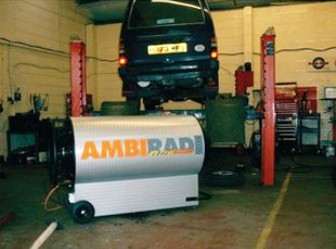
Commercial buildings account for nearly a fifth of the UK's entire carbon emissions and the majority of this is produced during the winter months but, according to workplace equipment provider Slingsby, this level of pollution can be greatly reduced by making some simple improvements to inefficient heating systems.
It is estimated that businesses are responsible for approximately 40 per cent of the UK's total carbon emissions and 18 per cent of all carbon comes from private and public sector buildings according to The Carbon Trust. This poor level of energy efficiency is thought to cost UK workplaces £2bn every year.
Lee Wright, Marketing Director of Slingsby says: "Energy prices are already high and heating bills are a major burden for many organisations. However there is usually considerable scope for reducing these costs and in many cases it's easy to see how and where savings can be made.
"Ideally the responsibility for the heating system within a building needs to be part of someone's job description, otherwise it's too easy to turn the heating on when it's cold and turn it off when it's warm. The worst case scenario, albeit a very common one, is when windows are open because a building is too warm but the heating is still on, which really is a major waste of both money and energy."
Lee adds: "Although it may sound obvious whoever is responsible for the heating system should start by checking the thermostat settings and make sure the timer settings relate to the times that the building is occupied. It's also worth using a thermometer to check room temperatures and make sure thermostats are working properly. Then look at parts of buildings where windows are regularly open or staff are wearing summer clothes in winter because it's likely that heat is being wasted in these areas.
"Next ventilation fans should be switched off in unoccupied areas to save both fan energy and the need to replace warm air. Often the building's fabric, such as walls, windows and doors, can contribute to heat loss so it's worth checking for draughts and asking colleagues to report draughts near their workstations. In most cases air leaks are extremely quick and easy to repair and this will save energy immediately."
Below is a selection of popular and cost-effective products that can help to save money and make workplaces more energy efficient.
www.slingsby.com